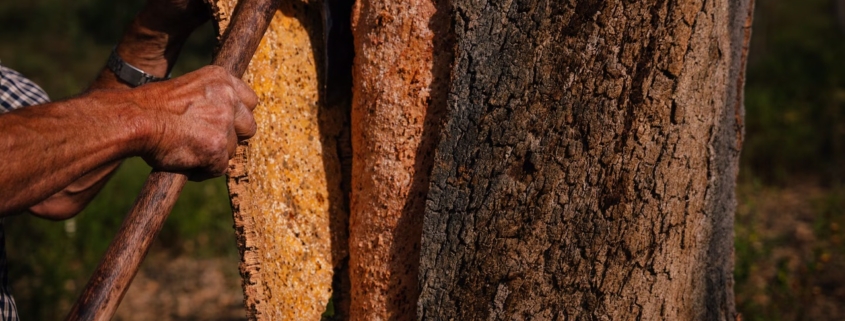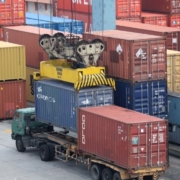Corkoak
‘Those who care about their grandchildren plant cork oak trees – Portuguese saying

Cork has been around for thousands of years in the western Mediterranean. Egyptians, Greeks, and Romans used it for fishing gear, sandals, and sealing of jugs, jars, and barrels. As glass bottles gained popularity in the 18th century, cork became the preferred wine stopper because it is durable, waterproof, and pliable.

Nowadays cork is experiencing a revival as more industries are looking for sustainable alternatives to plastic and other materials derived from fossil fuels. The bark is used for flooring, furniture, clothes, footwear, bags, and hats and as an effective thermal and acoustic insulation in buildings and electric car batteries. It is resistant to water and oil and very durable, remaining virtually unchanged for many years.

The slow-growing cork oak tree – scientifically known as Quercus suber – is the source of this eco-friendly material. Portugal has one of the largest cork oak forests in the world, covering vast areas in the poor soil of the dry Alentejo province. The country is the world’s largest producer and cork its most exported product, reaching over 1 billion euros and being sold in over 130 countries.

But cork is more than a sustainable and fashionable material. In addition to providing employment, the forests absorb CO2. Unlike most trees, evergreen cork oaks are never cut down as they are protected by law. This means that their carbon storage capacity continues through the 200 years or more they live.

The bark can only be harvested between May and August by experienced workers who carefully strip the outer layer without damaging the trunk. The cork oak is unique in regenerating its bark. Once it is removed, the last number of that year is applied with white paint on the exposed trunk – a 4 means bark was harvested in 2014 – after which the tree will be ready for another harvest nine years later.

Although cork forests can help mitigate global warming and the thick bark protects the tree from fire, they are increasingly at risk as wildfires become more frequent and more intense. Especially in the first two years after the cork is extracted, the trees are vulnerable to wildfires as the trunk is without protection.
Recycled cork can also be used to make other products. More than 300.000 corks were needed to make a mosaic of Nobel laureate José Saramago, which was credited to the Guinness Book of Records in 2014. Meanwhile Green Cork – a recycling program started by the environmental organization Quercus – has recycled more than 100 million cork stoppers since 2009.
Enjoy the week Aproveite a semana (pic WashPost)





